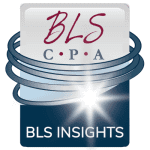
Are you the proud parent of a recent high school graduate? Are you preparing for your son or daughter’s college move-in day? If you are then you are probably looking ahead to plan your tax strategies now for your 2017 return. The education credits available in 2017 are the American Opportunity Tax Credit (AOTC) and the Lifetime Learning Credit (LLC). In prior years the Tuition and Fees Deduction was another option; however, as of the posting of this blog, Congress has failed to renew the Tuition and Fees Deduction and it is unclear whether or not lawmakers will renew the deduction retroactively this year. All three options could be used on the same tax return as long as they were not all used for the same student.
You may be wondering which strategy is best for you. In order to answer that you must first understand the differences between the two main strategy categories – tax deductions and tax credits. The two sound very similar yet the impact on your tax return could be significant. The differences, simply put, are a tax deduction reduces your taxable income with your benefit being that of your marginal tax bracket. Whereas the AOTC is a dollar-for-dollar direct reduction of your tax bill. For this reason credits are generally perceived as preferred over deductions. This is not to suggest that tax credits are always better than tax deductions. In most cases the expense itself determines which category you will be choosing which is where tax planning with your accountant is beneficial.
Let’s look at the American Opportunity Tax Credit (AOTC). This is an education credit used towards “qualified education expenses paid for an eligible student for the first four years of higher education”. The maximum credit per eligible student per year is $2,500 for up to $4,000 a year in tuition. The student must be enrolled at least half time for at least one academic period beginning in the tax year. The AOTC is available for a maximum of four years of undergraduate tuition paid per student. The $2,500 AOTC is subject to the AGI phase-out which is non-refundable; however, if you don’t have a tax liability, you can still qualify for a refund up to $1,000 which is refundable.
What expenses qualify? Amounts paid for tuition, fees (including student activity fees required for attendance) and expenses for books, supplies and equipment the student needs for a course of study (even if the monies are not paid to the school). Room and board does not qualify. The school should issue a Form 1098-T (Tuition Statement) by January 31.
In most cases, the AOTC is the first credit used by those with qualified higher education expenses allowing the Lifetime Learning Credit (LLC) to kick in after the AOTC is exhausted. Please contact our office to discuss your individual tax planning needs.
Photo by Nottingham Trent University (License)
